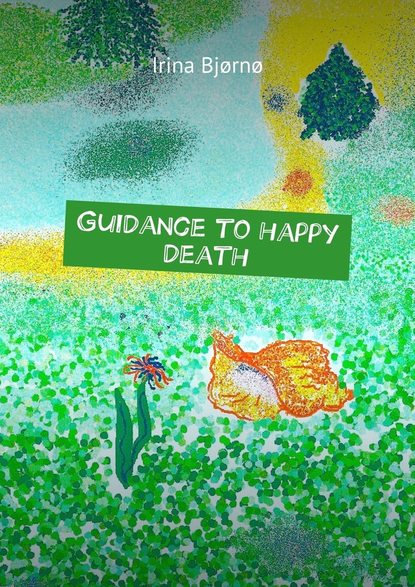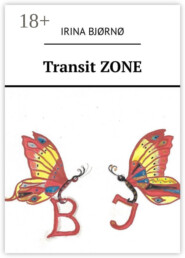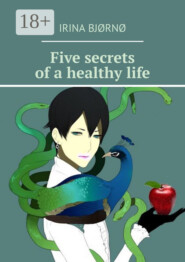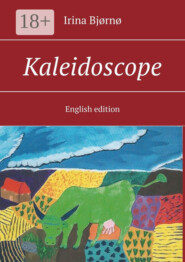По всем вопросам обращайтесь на: info@litportal.ru
(©) 2003-2024.
✖
Guidance to happy death
Настройки чтения
Размер шрифта
Высота строк
Поля
Modern medicine knows a lot about the reason for death but no one knows what death really is. One day you will experience your own death. We think that death is happening to others, not with us. The biggest mystery of death is that it has clear meaning: death is necessary for the everlasting creation chain. Death is part of the creation process. Without death the new creative process will suffer.
Everything has their own circle of death: things, trees, molecules, atoms, societies, planets, and living creatures. We know a lot about it. And still we try to avoid the threat of death. We would like to live, even when a person’s life is difficult and meaningless. Why? Because we have deep in us the natural instinct of survival and making a new generation – that is what nature needs. But you? What do you need?
When people in some, as we call, “developed” societies struggle for life survival they are not thinking about why they are doing this. They do it more by instinct. But, when a developed modern democratic society starts to give basic survival kits for everybody, the question of death’s meaning starts to be hidden. Daily modern TV is full of reports of bloody events – real and fictional ones (movies) – still it is not the way to know the depth of death experience.
Death is an everyday partner of our existence. We need to kill the life of plants, trees, animals to support our existence therefore life is very aggressive. You will kill the life of something to support your own survival no matter if you are a vegetarian or not. And the things that you produce (urine, faeces and sweat) are far from being useful for other creatures apart from bacterial and some fungus.
It is not critic – it is truth. Most important is that your life existence has a clear meaning: for you, for your society/family, for our planet. Why are you here? Who will benefit from your cannibal existence?
And, in fact, do you know the art of dying well? The next part of the book will help you to clarify some sides of this art.
2. Best diet for dying person
What to eat if you are dying? Easy! Eat what recharges and supports your life energy. And what is that? Easy again! Food that is still full of life energy: living food. How to recognise this food? It is in the tree, it is in the garden, it is around you jumping, going, and making sounds. Local, seasonal, fresh. It is your new mantra if you would like to sustain your life energy as long as possible. Fish are direct from the sea, vegetables are from the garden, and fruits are from the trees. No (or minimum) transport, no processing. Meat (if you still need it) is from the local butcher or hunter, milk is direct from the local farm. I learned in Pennsylvania that the best milk products, together with chicken and fish, are from the Amish community. When I lived in Pennsylvania, I was in the marked every Fridays just to buy their products. Amish community is not using any fertilisers or chemicals for more than 250 years and their ethical politics are still reliable. I have heard from my friend in New York that rich Americans make contracts with Amish people to deliver their natural fresh, just from the cow, milk in glass bottles early in the morning directly to their doors. And in the top of the milk it is cream. Jammy!
And now about the food combinations:
Group 1: I call it balancing and life support food. This food is easy to digest. It means that you do not spend too much energy for digestion and receive more direct life energy for yourself.
Second group is stimulating food. This application depends on your daily activity. If you work physically you can sometimes include some elements (moderate) from group 2 in your daily diet. But if you are unwell stick to group 1.
Group 2: Stimulating food.
Group 3: food that is difficult to digest. Here is some foodstuff, which sometimes can be used, but it is not the food to sustain your life energy. It is difficult to digest and the part of energy needed for digestion can be bigger than the production of cells of life support energy. Be careful with this foodstuff.
Everything we eat should give us the life energy to support our inner activities (as cell maintenance processes) and outer activities and not create digestions troubles. A tiger who eats meat (very fresh meat indeed!!!) will take a break sometimes for a month between his bloody meals. He is not enjoying the antelope’s beefsteak 365 days a year. If you eat food from group 3 too frequently you will feel tired, sluggish, unclear, sloppy and dull.
Group 3
I do not recommend eating left overs from another day, old food, or industry processed food. I do not recommend you eat when you are angry or upset. In these two cases it is better to do physical challenges: dance, yoga, and sauna. If you are one of the “group 3 fans” this life strategy will not give you anything apart from a shortcut to the cemetery and a bunch of illnesses. How much to eat? The older you are “growing” (if you are still growing at all) the less you should eat. Your activity level is diminishing with age, your muscles are not the same, and you do not need to dig a tunnel every day. Your metabolic processes (or speed of life circulating body processes) will start to slow down with ages. It is natural. That is why you need to use the adaptation law, do not load your stomach with the same amount as 20-year old athletes are doing.
Everything has their own circle of death: things, trees, molecules, atoms, societies, planets, and living creatures. We know a lot about it. And still we try to avoid the threat of death. We would like to live, even when a person’s life is difficult and meaningless. Why? Because we have deep in us the natural instinct of survival and making a new generation – that is what nature needs. But you? What do you need?
When people in some, as we call, “developed” societies struggle for life survival they are not thinking about why they are doing this. They do it more by instinct. But, when a developed modern democratic society starts to give basic survival kits for everybody, the question of death’s meaning starts to be hidden. Daily modern TV is full of reports of bloody events – real and fictional ones (movies) – still it is not the way to know the depth of death experience.
Death is an everyday partner of our existence. We need to kill the life of plants, trees, animals to support our existence therefore life is very aggressive. You will kill the life of something to support your own survival no matter if you are a vegetarian or not. And the things that you produce (urine, faeces and sweat) are far from being useful for other creatures apart from bacterial and some fungus.
It is not critic – it is truth. Most important is that your life existence has a clear meaning: for you, for your society/family, for our planet. Why are you here? Who will benefit from your cannibal existence?
And, in fact, do you know the art of dying well? The next part of the book will help you to clarify some sides of this art.
2. Best diet for dying person
What to eat if you are dying? Easy! Eat what recharges and supports your life energy. And what is that? Easy again! Food that is still full of life energy: living food. How to recognise this food? It is in the tree, it is in the garden, it is around you jumping, going, and making sounds. Local, seasonal, fresh. It is your new mantra if you would like to sustain your life energy as long as possible. Fish are direct from the sea, vegetables are from the garden, and fruits are from the trees. No (or minimum) transport, no processing. Meat (if you still need it) is from the local butcher or hunter, milk is direct from the local farm. I learned in Pennsylvania that the best milk products, together with chicken and fish, are from the Amish community. When I lived in Pennsylvania, I was in the marked every Fridays just to buy their products. Amish community is not using any fertilisers or chemicals for more than 250 years and their ethical politics are still reliable. I have heard from my friend in New York that rich Americans make contracts with Amish people to deliver their natural fresh, just from the cow, milk in glass bottles early in the morning directly to their doors. And in the top of the milk it is cream. Jammy!
And now about the food combinations:
Group 1: I call it balancing and life support food. This food is easy to digest. It means that you do not spend too much energy for digestion and receive more direct life energy for yourself.
Second group is stimulating food. This application depends on your daily activity. If you work physically you can sometimes include some elements (moderate) from group 2 in your daily diet. But if you are unwell stick to group 1.
Group 2: Stimulating food.
Group 3: food that is difficult to digest. Here is some foodstuff, which sometimes can be used, but it is not the food to sustain your life energy. It is difficult to digest and the part of energy needed for digestion can be bigger than the production of cells of life support energy. Be careful with this foodstuff.
Everything we eat should give us the life energy to support our inner activities (as cell maintenance processes) and outer activities and not create digestions troubles. A tiger who eats meat (very fresh meat indeed!!!) will take a break sometimes for a month between his bloody meals. He is not enjoying the antelope’s beefsteak 365 days a year. If you eat food from group 3 too frequently you will feel tired, sluggish, unclear, sloppy and dull.
Group 3
I do not recommend eating left overs from another day, old food, or industry processed food. I do not recommend you eat when you are angry or upset. In these two cases it is better to do physical challenges: dance, yoga, and sauna. If you are one of the “group 3 fans” this life strategy will not give you anything apart from a shortcut to the cemetery and a bunch of illnesses. How much to eat? The older you are “growing” (if you are still growing at all) the less you should eat. Your activity level is diminishing with age, your muscles are not the same, and you do not need to dig a tunnel every day. Your metabolic processes (or speed of life circulating body processes) will start to slow down with ages. It is natural. That is why you need to use the adaptation law, do not load your stomach with the same amount as 20-year old athletes are doing.
Вы ознакомились с фрагментом книги.
Приобретайте полный текст книги у нашего партнера:
Приобретайте полный текст книги у нашего партнера:











